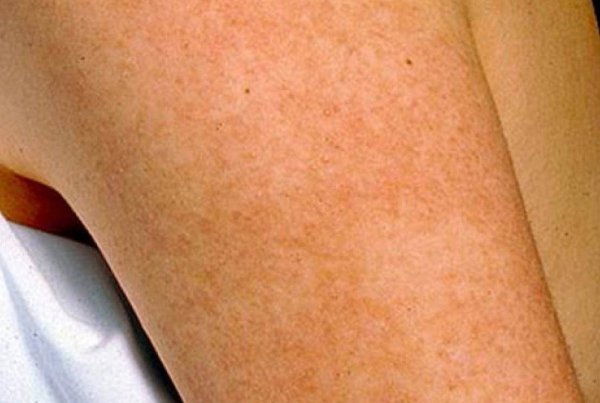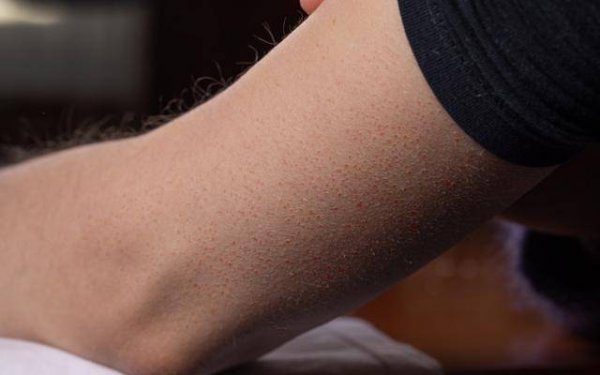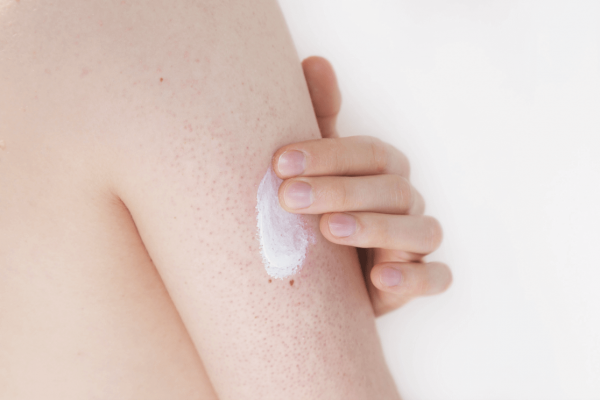Keratosis Pilaris is a skin condition that causes tiny bumps and patches all over the skin. More commonly known as ‘chicken skin’, it is harmless and can start showing at an early age. It usually appears on upper arms, thighs, cheeks, and buttocks. While many people face this condition, there are still plenty who are unaware of this.

Image Source
This condition is more common in women than in men. People who have Keratosis Pilaris usually experience a rough and uneven skin texture. Little red or white bumps that are not acne and don’t itch or hurt can be seen all over the skin. While this skin condition cannot be cured, using clinically recommended creams and moisturisers can help to a great extent. People with dry skin or other skin issues like ichthyosis vulgaris or eczema are more prone to Keratosis Pilaris. But the condition is not contagious and improves with age.
Related: How And When To Use Your Hand Sanitiser: What You Need To Know
What are the symptoms of Keratosis Pilaris?
Keratosis Pilaris is caused due to an excessive buildup of keratin, a protective protein that is found in skin, hair, and nails. This buildup blocks the follicle opening, leading to tiny bumps. The signs and symptoms of this skin condition are:
- Tiny red bumps on thighs, cheeks, upper arms, or buttocks
- Rough and uneven skin texture that gets worse in cold and dry weather
- Red, inflamed, and scaly skin

Image Source
How can you treat Keratosis Pilaris
Even though Keratosis Pilaris can’t be cured, there are ways in which you can improve the appearance of your skin. Following these simple steps can soften the keratin deposits, making your skin smoother and more even.
- Exfoliate your skin frequently with products that contain alpha-hydroxy acids. Lactic acid and glycolic acid are the best to treat your skin. They help in removing dead skin and improve texture.
- Even though you should exfoliate your skin, you should avoid the use of any harsh object or pumice stone on your skin.
- Don’t scratch the bumps even if they itch, just apply some ice on it. Scratching the skin can cause a bacterial infection.
- Use fragrance-free soap and a hydrating moisturiser. Keeping your skin soft and hydrated improves the uneven skin texture.
- Don’t take long hot showers as they erode the natural oils of the skin. And the condition gets worse if you have dry skin.
- Try using humidifiers at home since moist air helps in keeping the skin hydrated and also improves its texture and appearance.

Image Source
When to consult a doctor
Usually, you don’t need to consult a doctor since this skin condition is quite common. But in case your children face this condition, and you are concerned about it, you might want to get it checked. Typically, a doctor will recommend products with strong alpha or beta hydroxy acids. But if you still want to make an appointment, you can see your dermatologist or skin doctor and decide on a course of action.
 Web Stories
Web Stories













